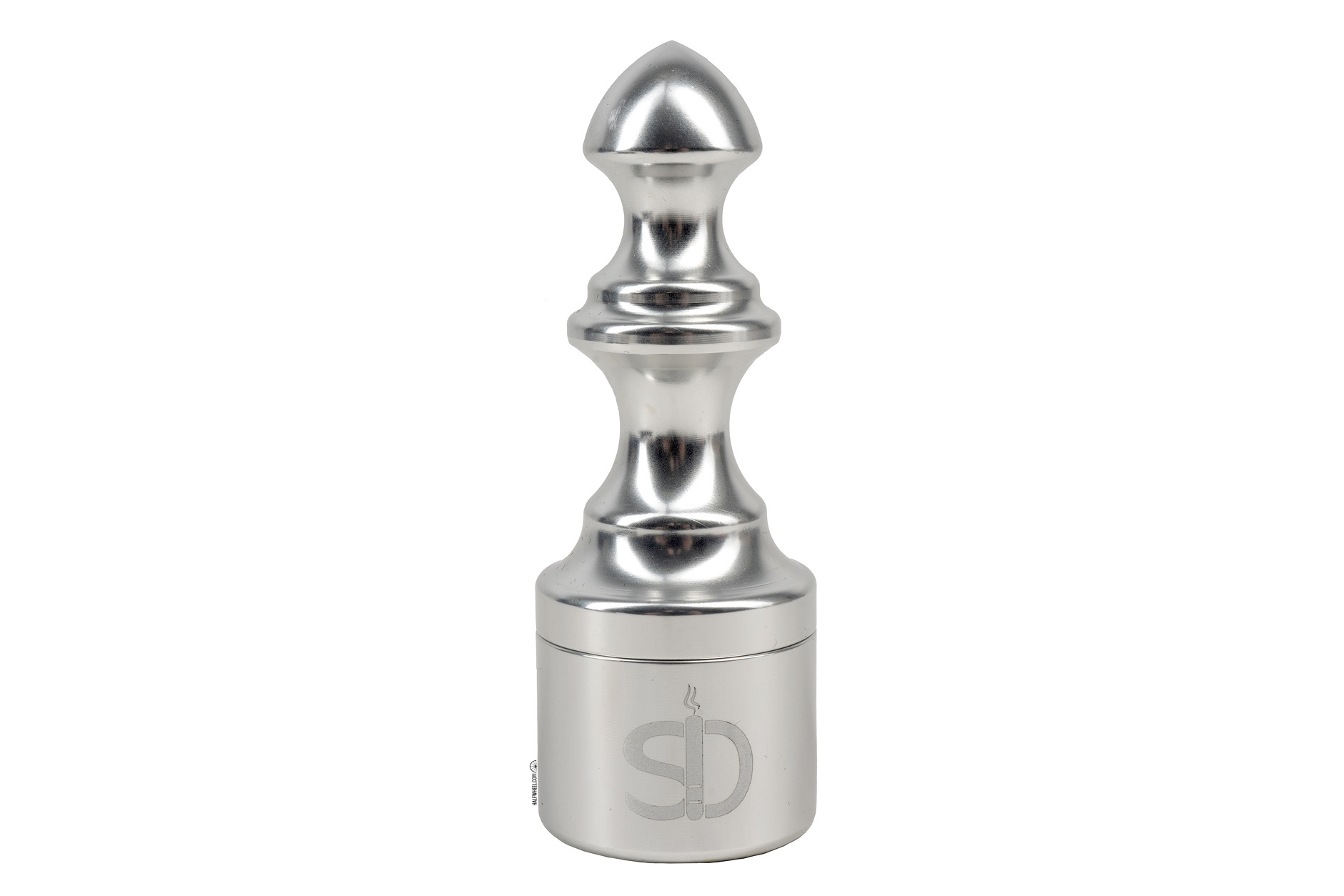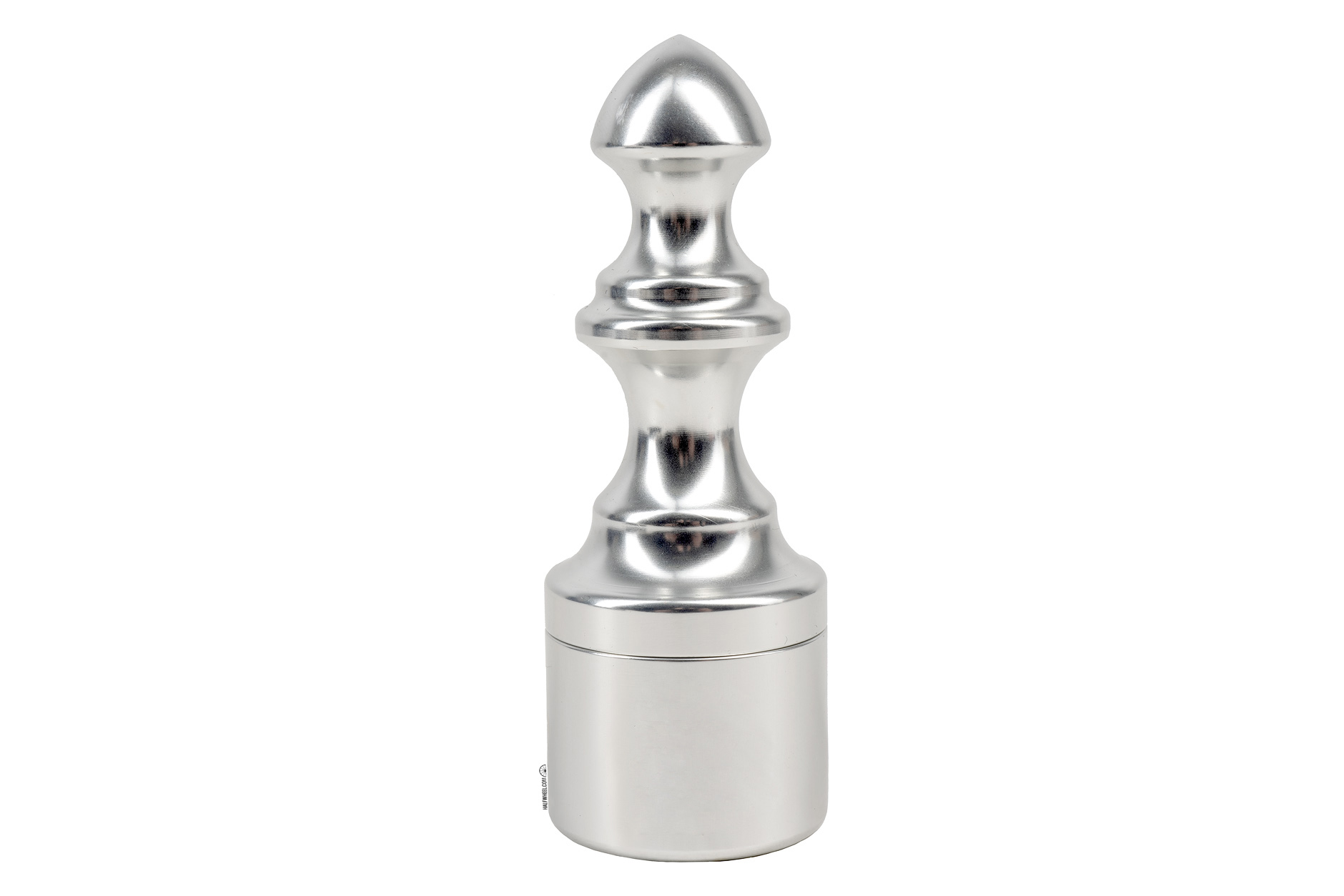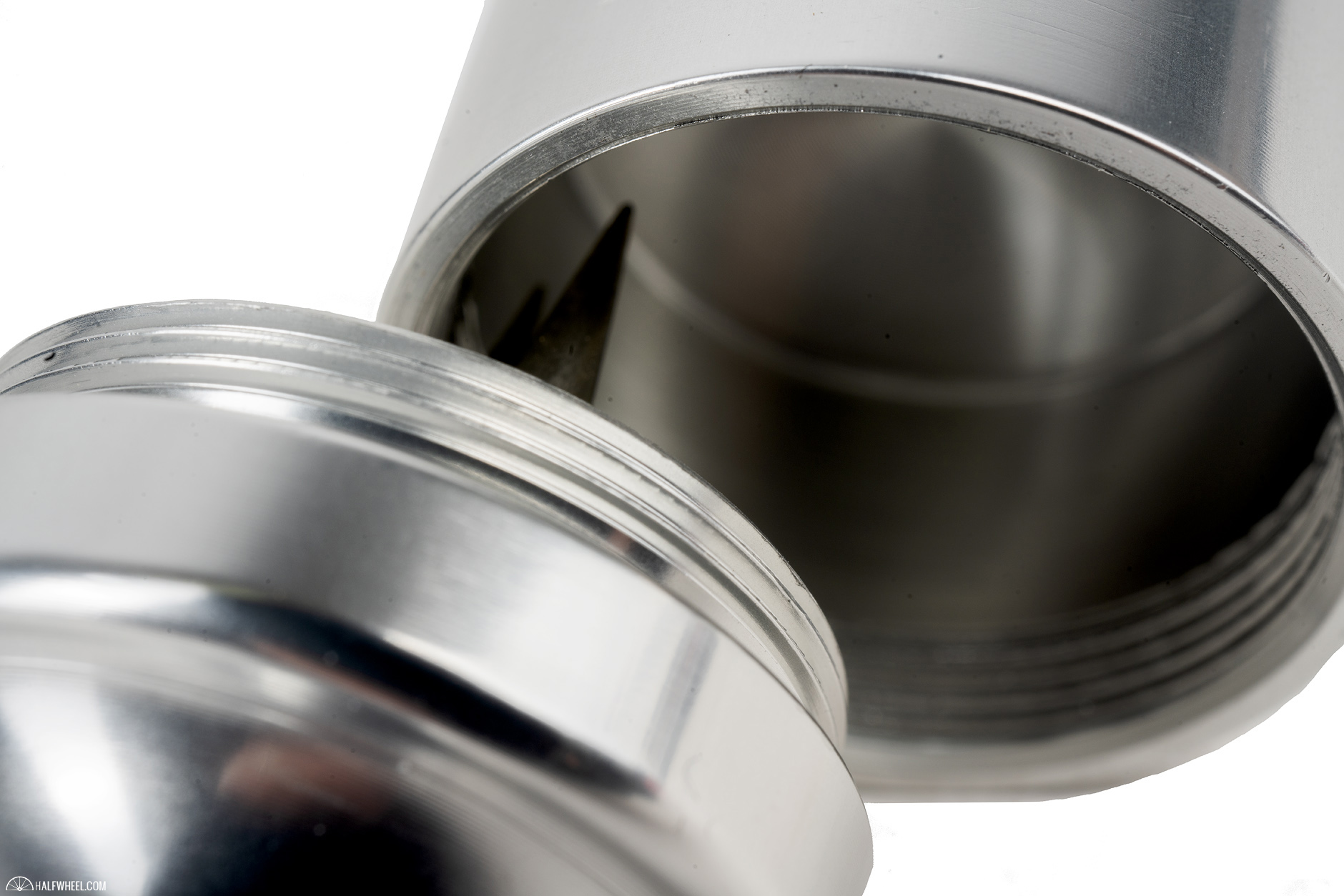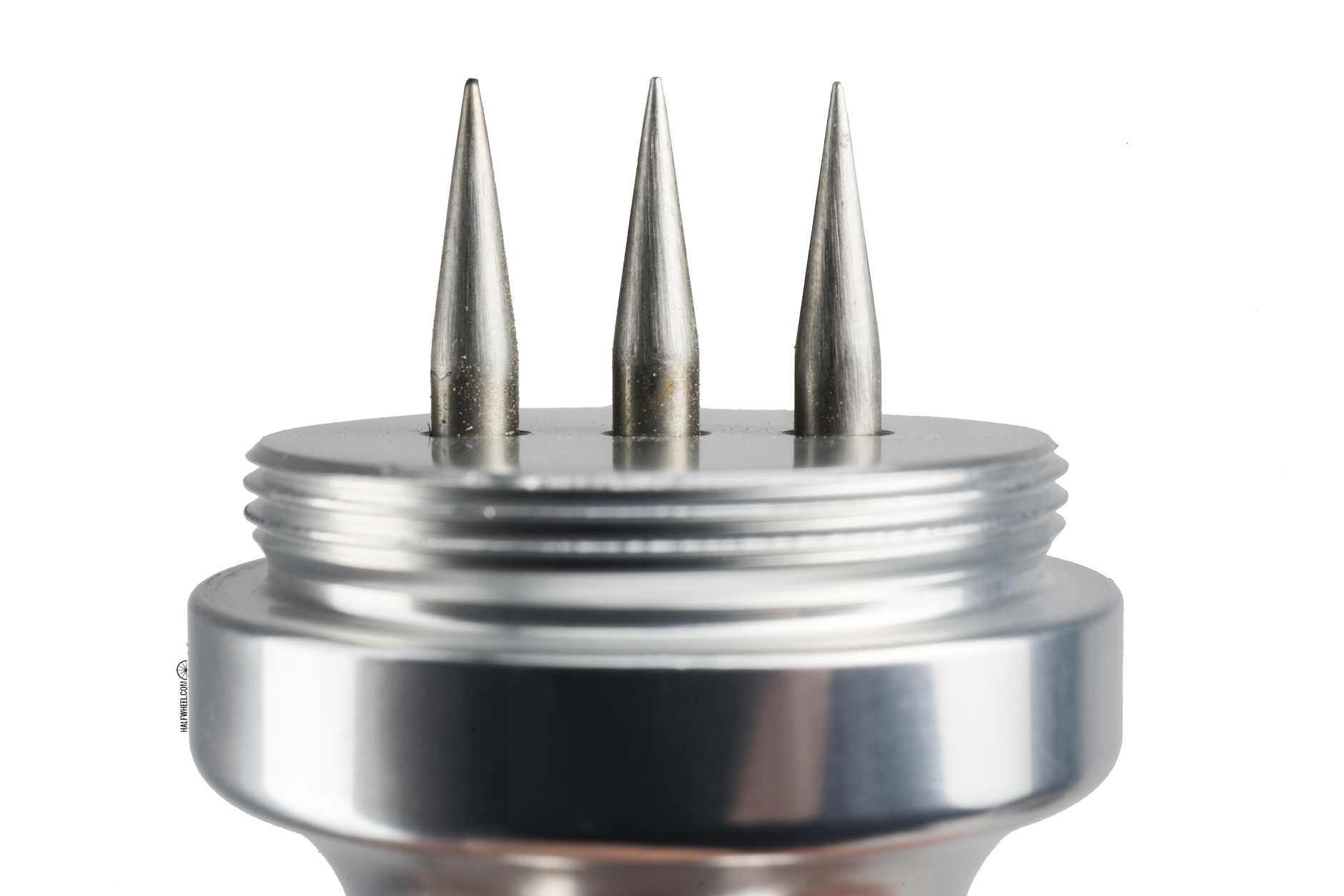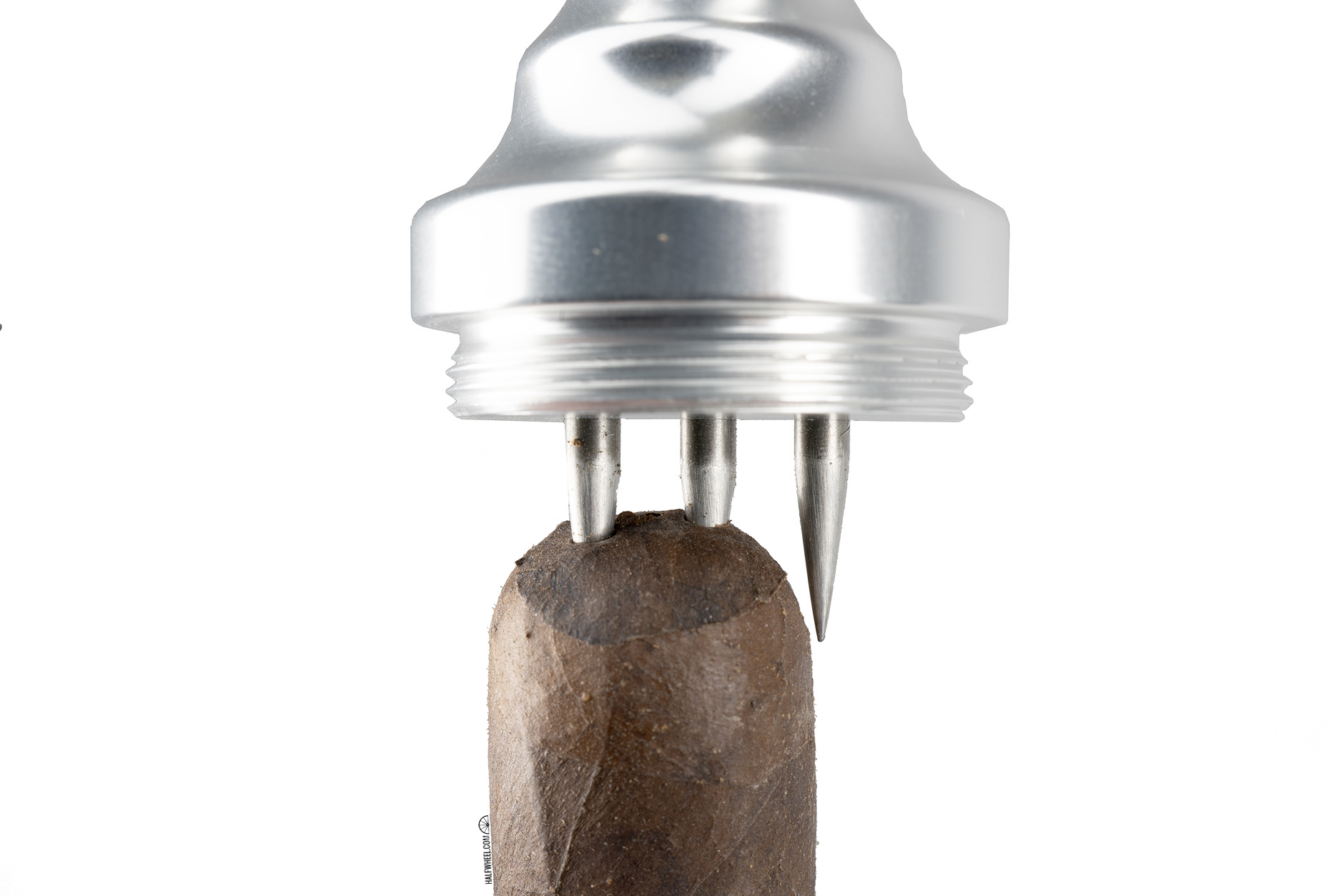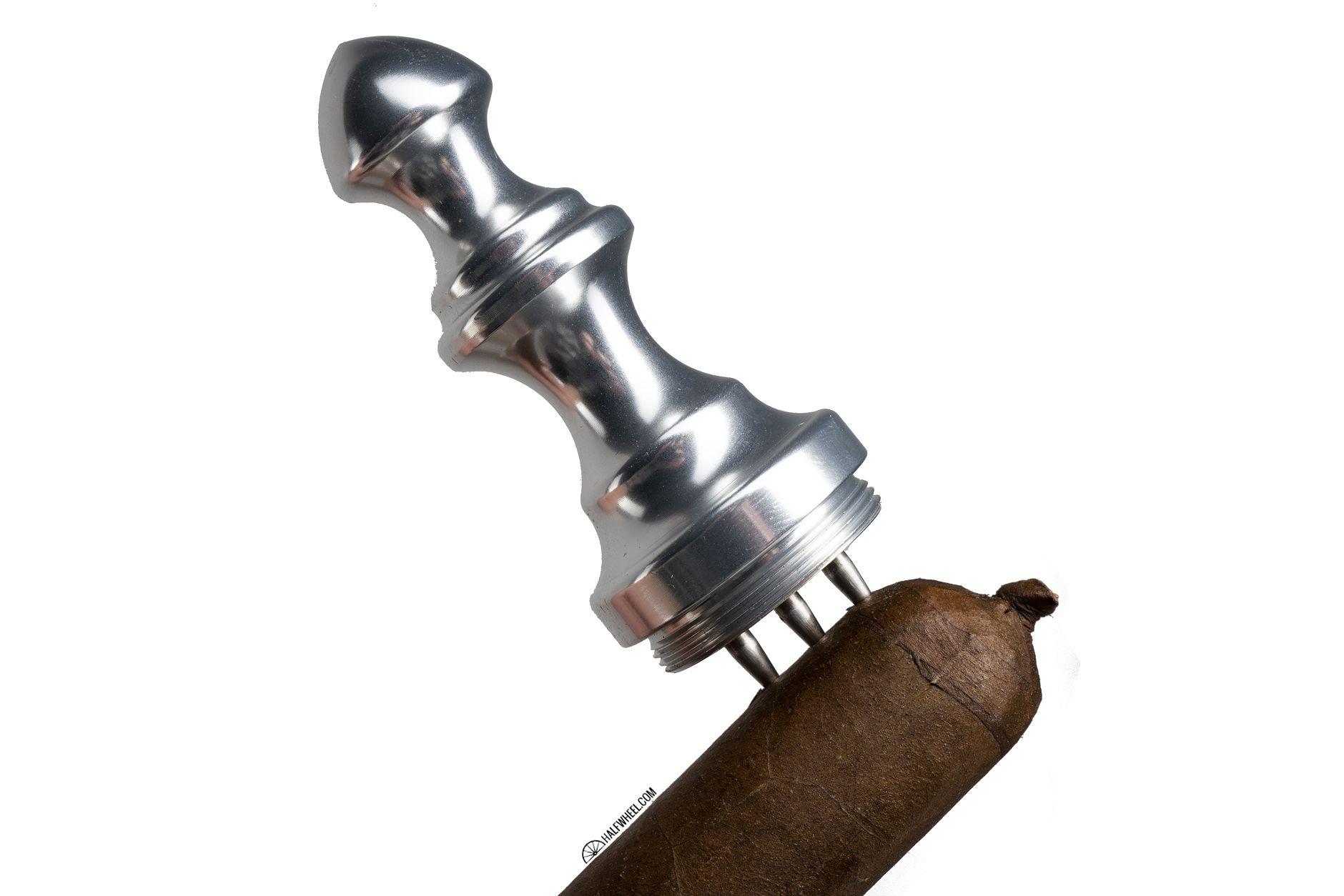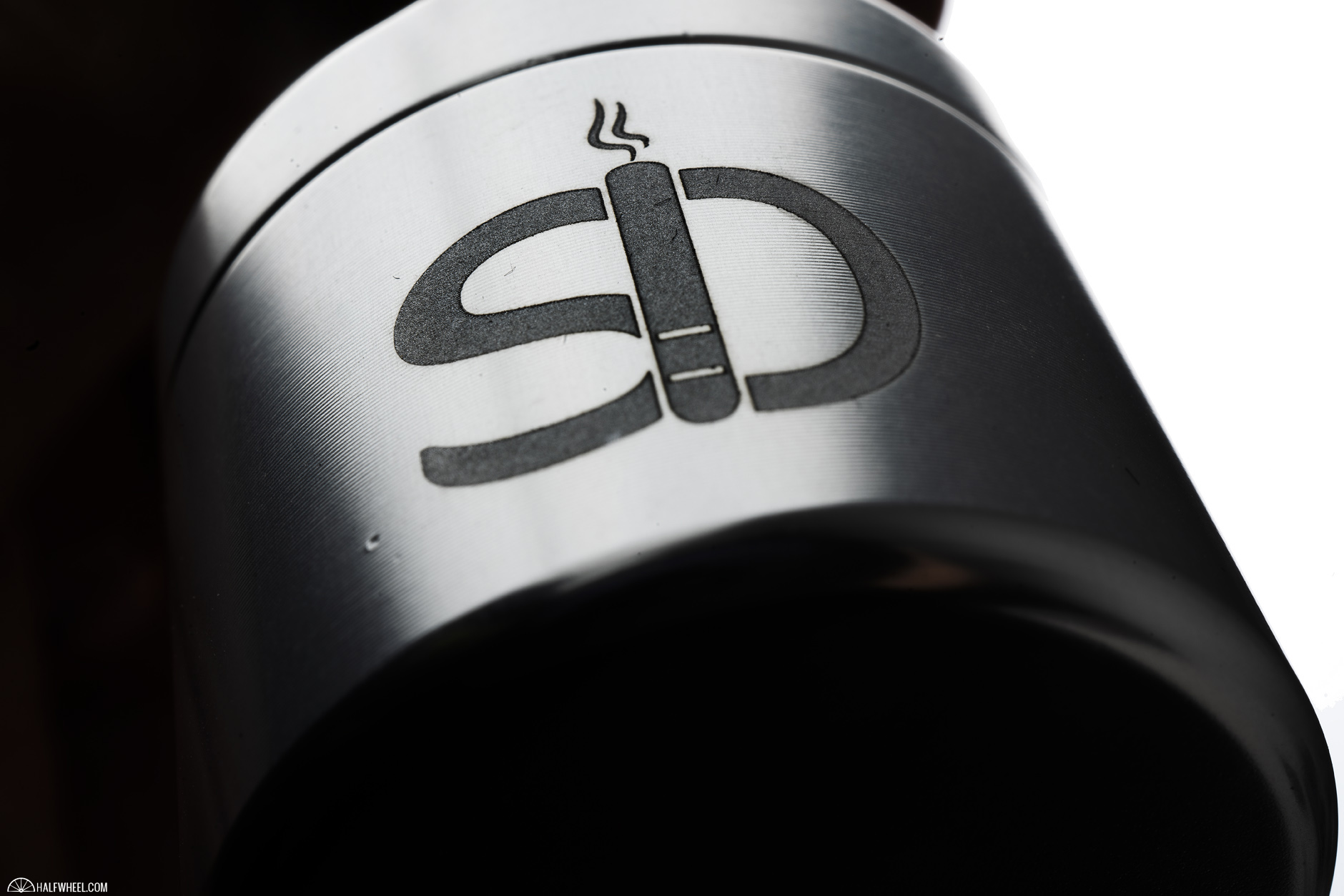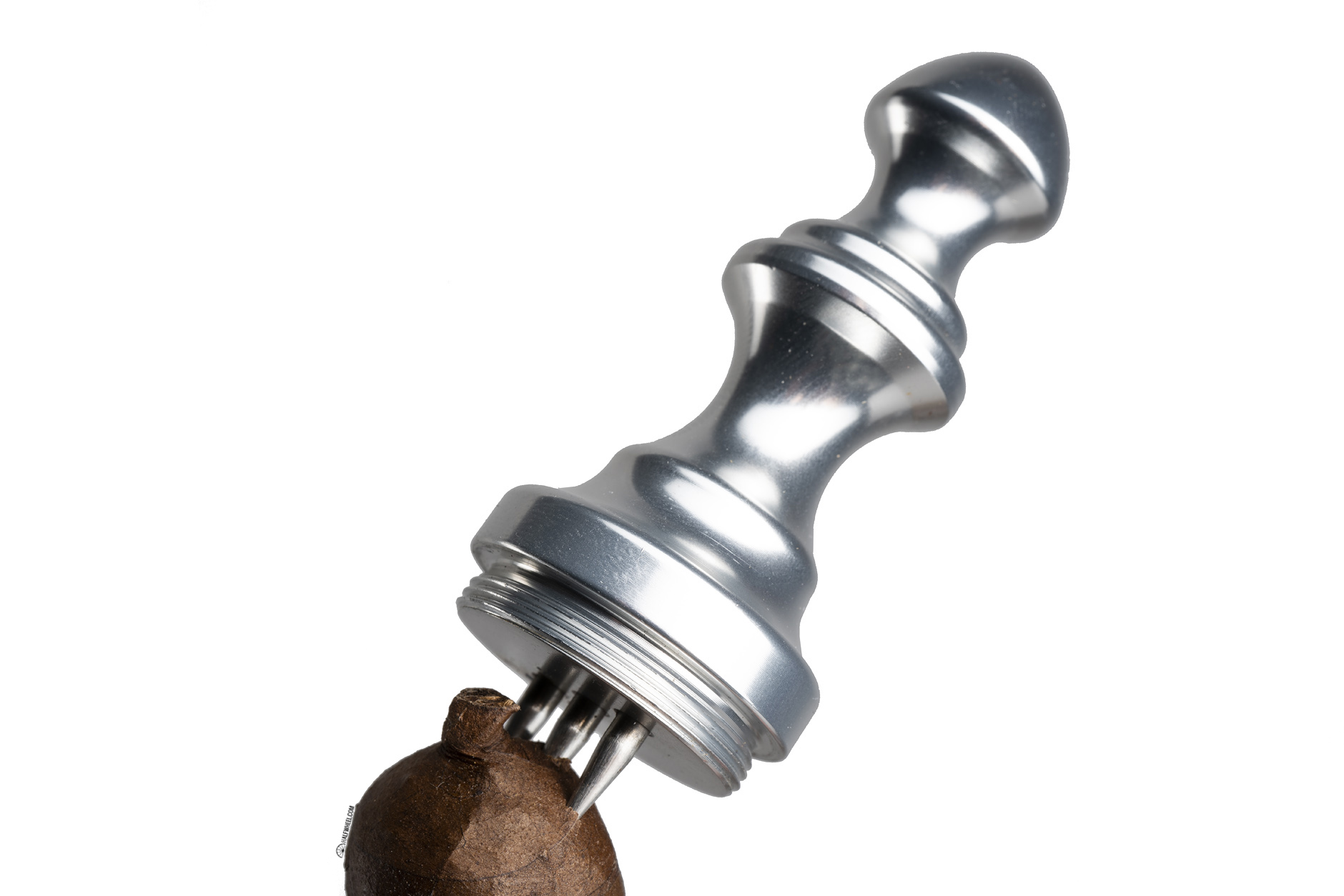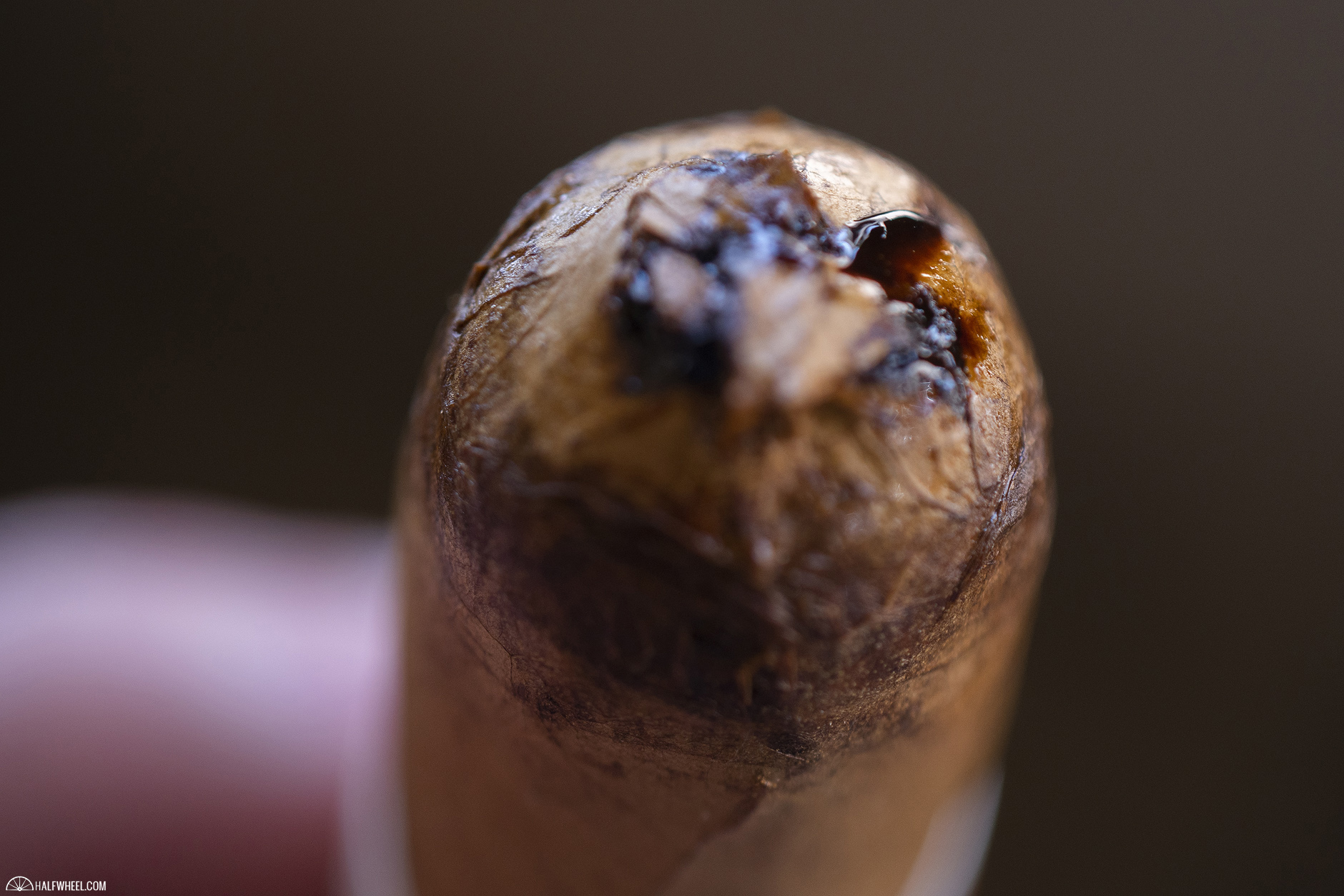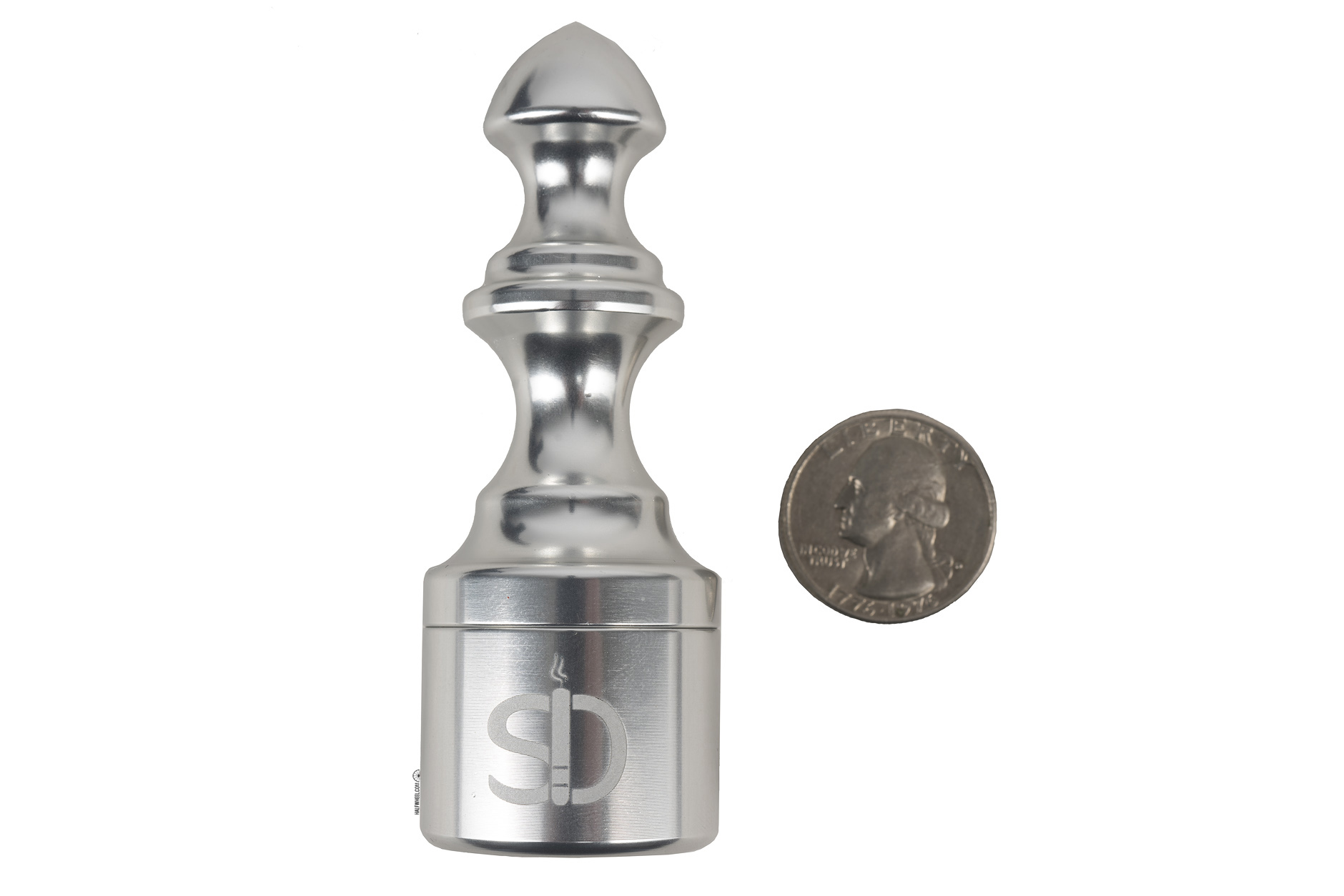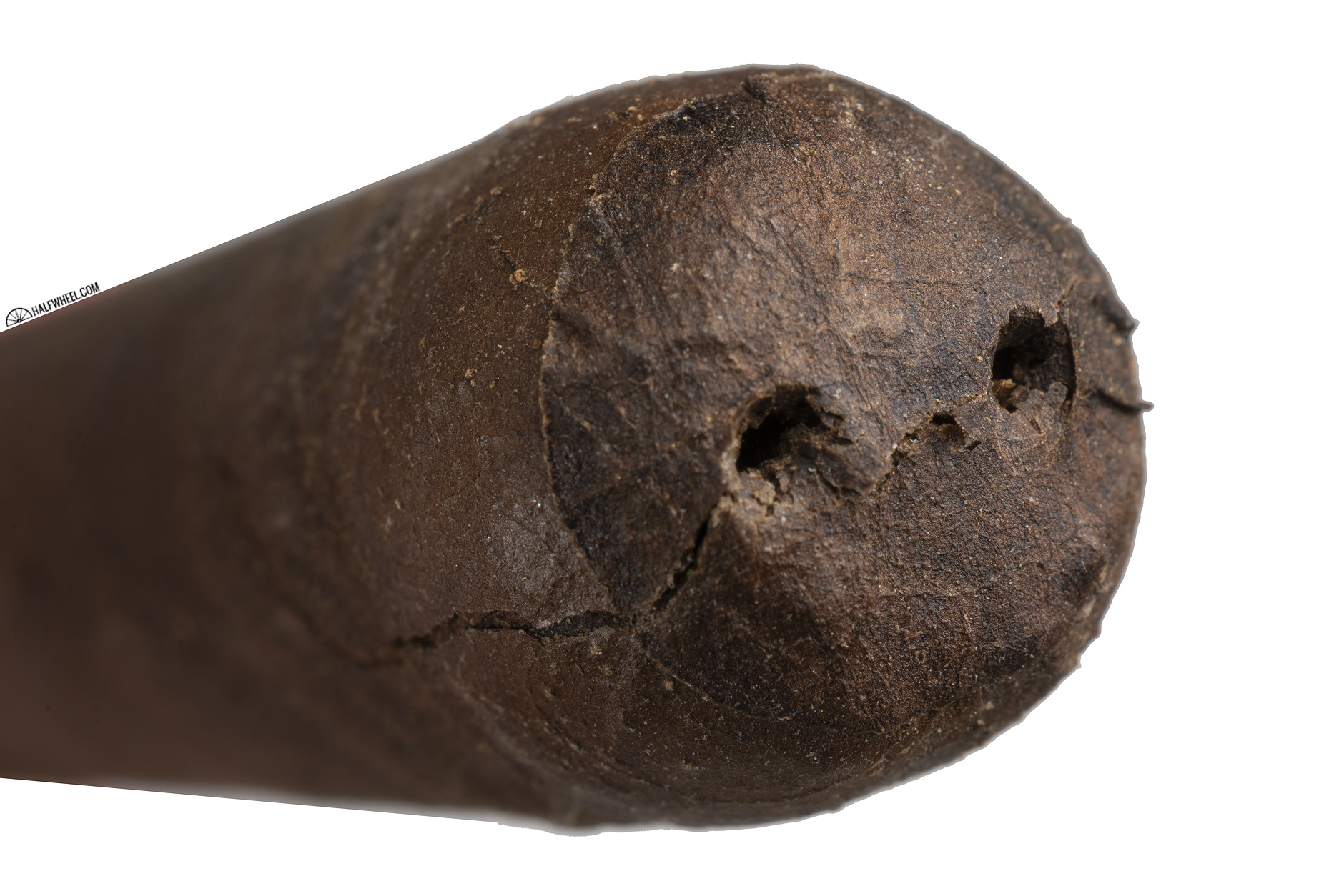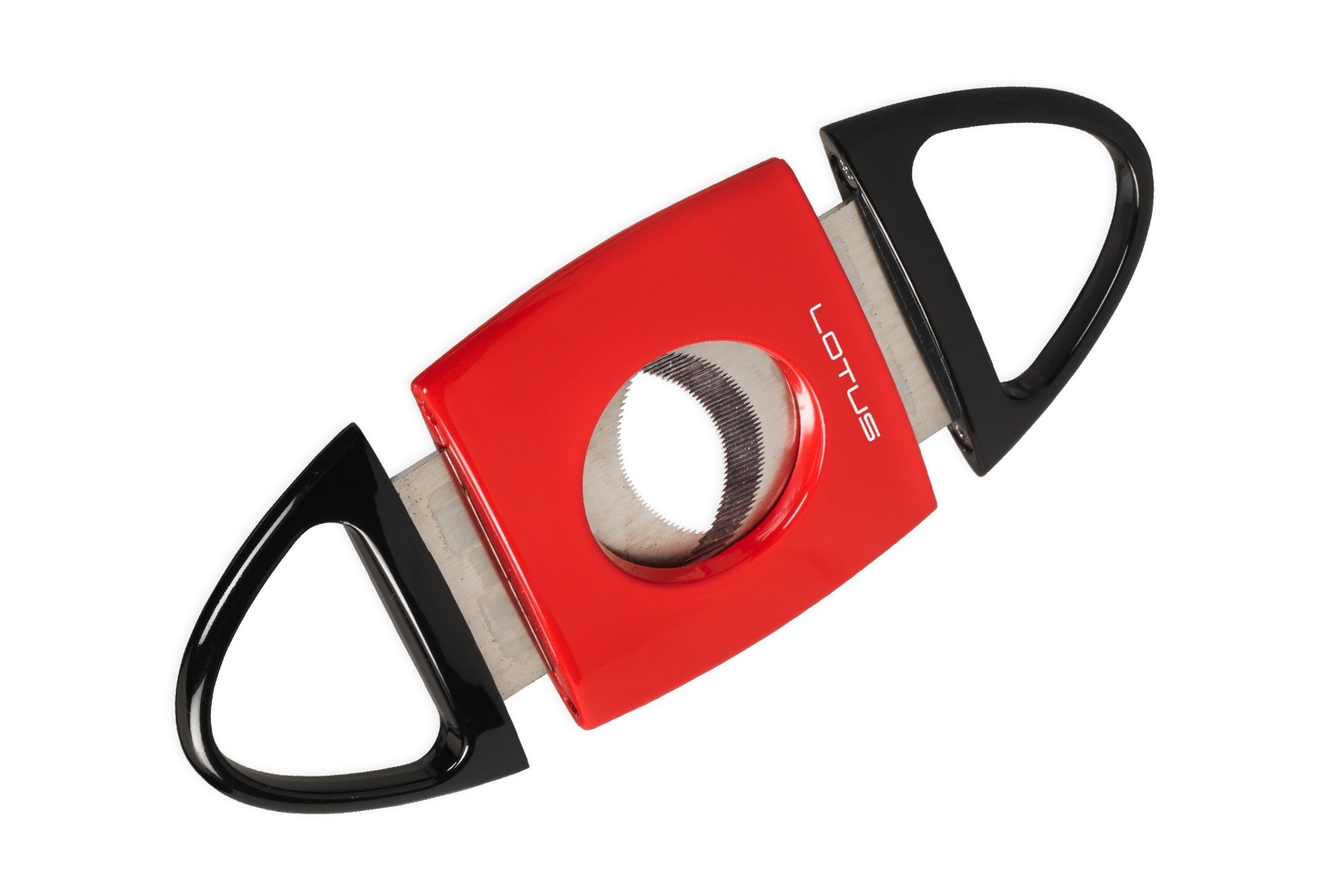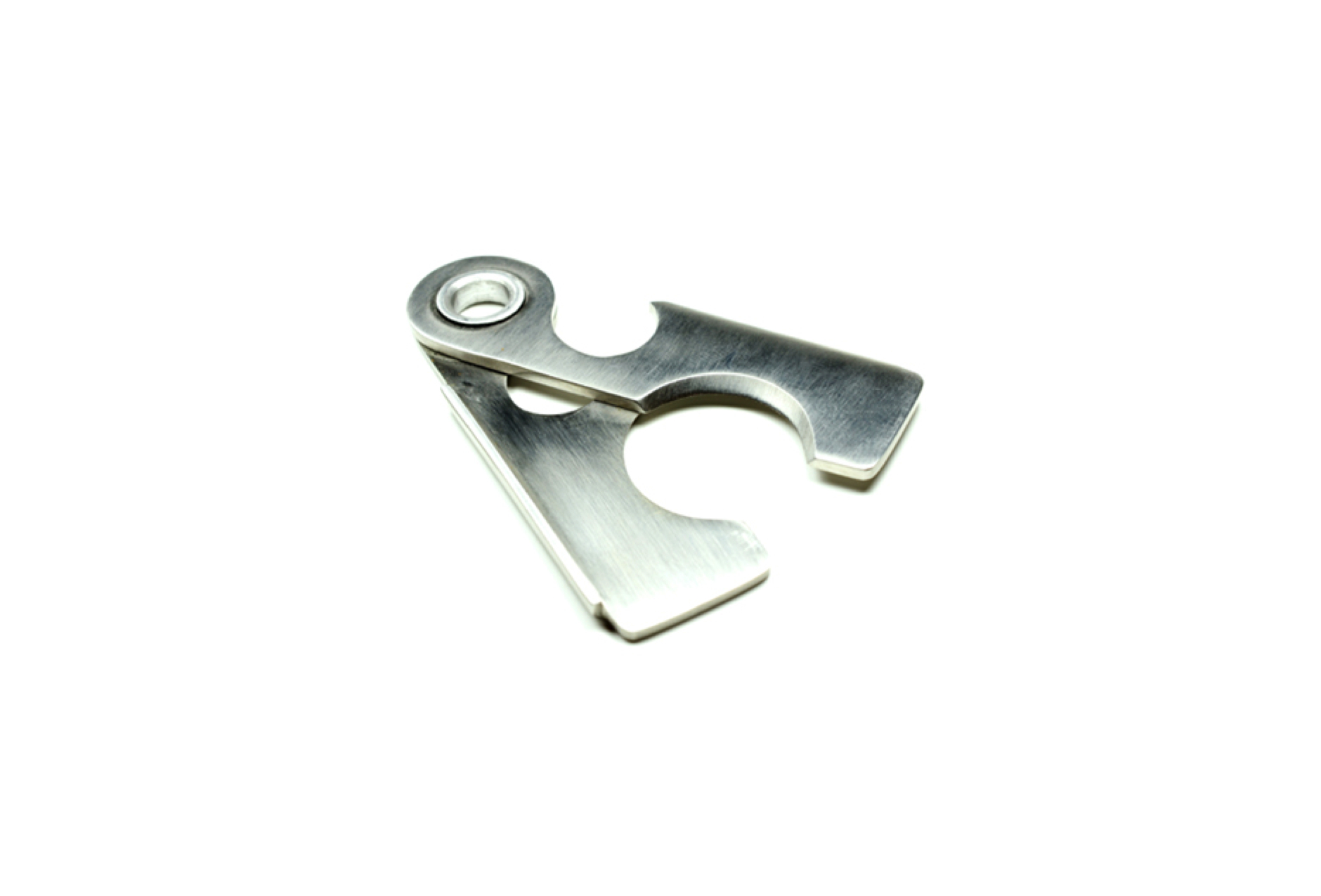There have been very few significant changes to the basic act of cutting cigars over the years, but the Select Draw Cigar Cutter is one of the newest unique options on the market. Launched in December 2018, the company was founded by businessman Mark Weissman and inventor Marc Alston, who thought up the idea of putting three sharp spikes onto a metal base that could be used to punch multiple holes in the cap of a cigar until the desired draw is reached.
To that end, the company released The Select Draw Original late last year, which is made up of a base composed of 770 aircraft grade aluminum, while the three spikes are made of steel. Weighing three ounces and measuring 3 1/2 inches x 1 3/4 inches, The Original features a polished sliver finish and carries a retail price of $33.99 each. Four months later, Select Draw added another option to its lineup named The Obsidian. While the physical specifications are identical to The Original in every way, the newest version features a glossy black finish and is priced at $33.97 each. In addition, each Select Draw comes packaged in a velvet bag that is opened and closed via draw strings.
According to an interview on All Thing Cigars, Select Draw is currently working on at least two new products: a mini version of the cutter as well as a a custom cigar holder.
How Does It Work?
While it may look a bit daunting the first time you see it, the actual process is fairly easy: after unscrewing the cap and exposing the three spikes, you hold the knob of the Select Draw in one hand—in my case, the right hand—while holding the cigar in your other hand. Next, you carefully line up the three prongs with the cap of the cigar and push the spikes slowly into the head about halfway down before pulling them out. From there, you can add holes in any number of places: quite a few times, I inserted the middle spike into the main hole which I placed in the center of the cap and just rotated the cutter 180 degrees and pushed down again, ending up with five holes. If the draw was still too tight—and it inevitably was, at least for my tastes—I inserted the middle spike back into the middle mole and rotated it another 90 degrees, and so on until I felt like I had the best draw I could achieve.
However, you are not limited to just punching holes in the cap: the company has made it clear that it thinks that there are times when using the Select Draw in various other places can lead to better results. These locations include around the edge of the cap—usually utilized by using the three spikes horizontally instead of vertically—and even vertically down the side of the cigar on four sides, meaning 12 additional holes in the cigar. The latter choice is an interesting choice that I tried out on a couple of samples, and while it did lead to a slightly more open draw compared to when I just punched through the cap alone—not exactly surprising, since more holes means more air being able to be drawn through the cigar—it also led to one instance of the wrapper unraveling a bit since two of the holes had to be placed below the cap of the cigar.
What Makes It Special?
Unlike a straight cut or v-cut—both of which are basically one-and-done—the Select Draw gives you almost unlimited control on just how tight or loose you make the draw on any given cigar. This can be done by adding holes one by one until you are totally happy, and as noted above, there are a plethora of places you can add holes until you get the draw you want. Smoking a lancero and one hole in the middle of the cap is not enough? Then you can use one of the spikes to push additional holes perpendicularly around that hole—or even down the side of the cigar—until you are happy.
Of course, each additional hole you punch into the wrapper of a cigar increases the chances of issues—more damage to the cap, more tar buildup, potential damage to the wrapper—but there is no doubt that the level of control that you have over the draw in any given cigar is hard to beat with more traditional cutting methods.
The Good
- High Quality Craftsmanship — This thing is built to last, and both the feel of the cutter as well as the overall look just reinforce that fact. The spikes are not going anywhere anytime soon and I found no issues at all with the tips dulling despite the fairly heavy use I put it through. In addition, despite the fact that I carried it around with me for almost two months—I even took it on vacation for a 10 day road trip to Wisconsin and back—there were very few scratches or overt damage to the finish of the cutter, although I did keep it in the pouch for most of the time I was testing it.
- Balance — From the first time you pick the Select Draw up, it is obvious that quite a bit of thought went into how the product was going to feel in your hand. It is extremely well-balanced, which does make it significantly easier to use.
- Unique Design — There is no doubt that the Select Draw will turn heads and spark conversation if people happen to see you use it, and I had multiple people stop and ask what I was using while I was testing it.
- Dual Purpose — Because of how sharp the spikes are and how they are positioned on the base, you can use the Select Draw as a cigar nubber in a pinch, something that most cutters are not capable of.
The Bad
- Damaged Caps — I can not tell you how frustrating it is to know that no matter how slow I pushed the spikes down into the cap, no matter how careful I was with my actions, no matter what angle I used, there was about a 50 percent chance that I would end up with some damage to the cap of the cigar. Obviously, that does not mean that the entire cap fell off of the cigar half the times I used it—that only happened twice in all the cigars I cut with it—but the damage ranged from a small piece coming off in-between two of the holes to more significant cap splitting.
- Tar, Tar, Tar — With about 25 percent of the cigars I used the Select Draw on, I had some issues with tar coming out of one or more of the holes that the cutter made. Granted, there were times when the issue was limited to only one or two holes total, but any tar oozing from the cap of your cigar is never a good thing.
- So Much Wasted Time — The amount of time it takes to get decent results with this product is almost obscene, especially when comparing it to more traditional cutting methods. It would not be so bad if the majority of cigars needed only three holes—i.e. only one pass with the spikes—but that was rarely the case: in fact, I found that more often than not, I needed five to eight holes in order to get the draw I wanted. This means that I had to very carefully push the Select Draw into the cap of my cigars at least three times, and while I did not time it, I would estimate it took me between three and four times longer to use this product compared to a simple straight cut or v-cut. This does not even take into account the time spent if you want to side cut the cigars in addition to the main holes, which would put you into a whole new realm of time spent.
The Competition
Due to the somewhat unique way that you are supposed to use the Select Draw, there are very few competitors on the market that I know of. However, the most obvious is the Shuriken Cigar Cutter, which uses six sharp blades to cut thin lines into the cap of cigars.
Additional Competitors
- An Ice Pick — A three-prong bartender’s ice pick, used to help separate ice, is rather similar in design though certainly neither as compact nor as portable.
- A nail — Since the spikes on the Select Draw are basically just sharpened pieces of metal attached to a base, an ordinary metal nail would perform essiically the same function at a fraction of the price. Having said that, I have used a nail to cut cigars a few times before, and the weight of the Select Draw makes all the difference in the world.
Should You Buy This?
No.
As outlined above, there are a number of significant issues with the Select Draw, but the main problem is not necessarily that it does not work in most situations, it is that there are a limited number of situations in which you will get the optimal results. One of the greats thing about a straight cutter—and one of the main reasons it continues to be as popular as it is—is its versatility: you can cut just about any cigar on the planet with it in under three seconds and end up with a smokable cigar. Unfortunately, the Select Draw seems to be designed to put obstacles in your way when it comes to not only ease of use, but also the amount of time and effort it takes to get even a basic draw out of any cigar. Throw in the not insignificant number of times I dealt with tar and you are left with an product that would be more usuful as a a chess piece than to cut cigars.

